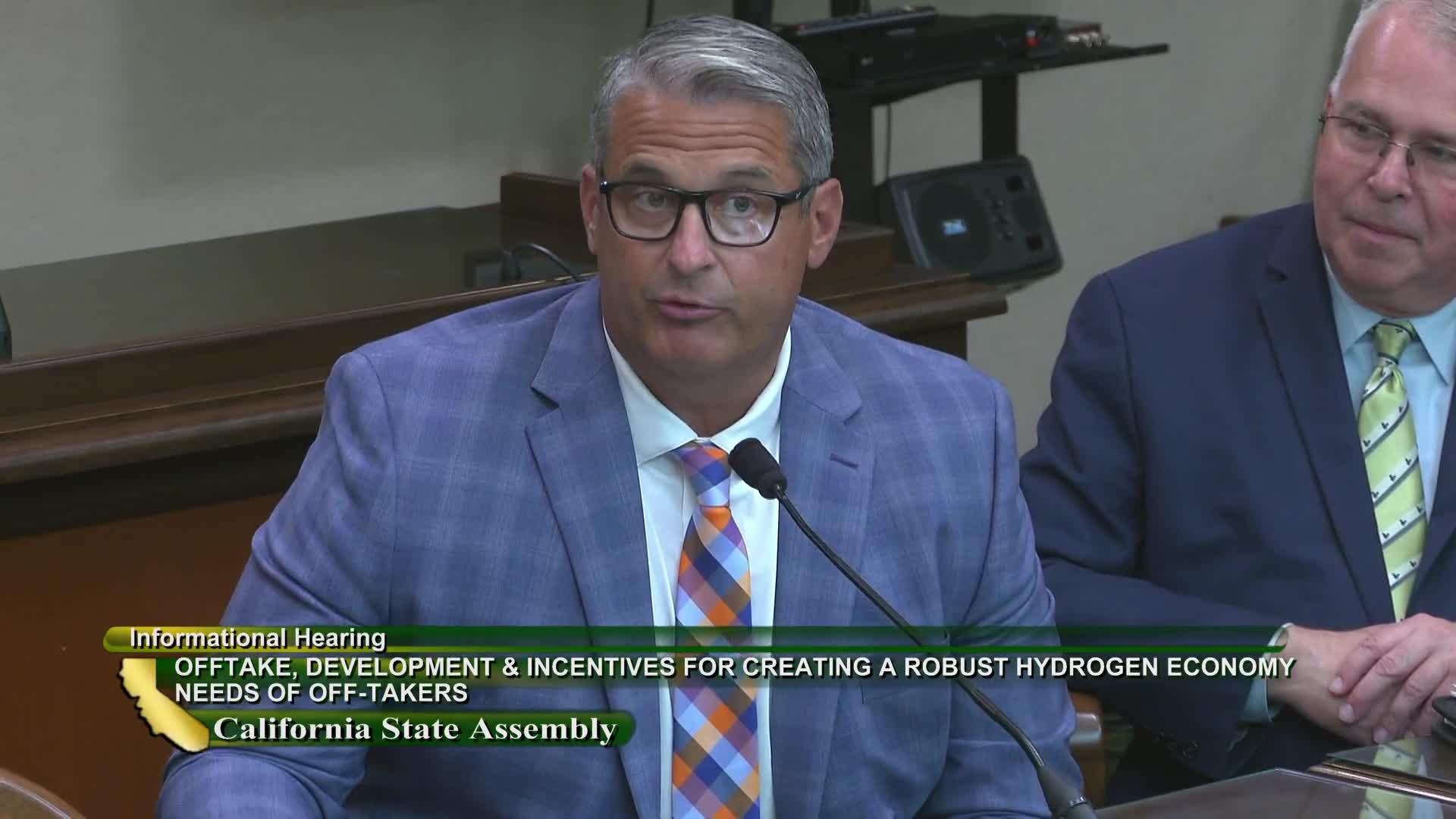Local leaders push for swift green energy solutions
August 06, 2024 | California State Assembly, House, Legislative, California

This article was created by AI summarizing key points discussed. AI makes mistakes, so for full details and context, please refer to the video of the full meeting. Please report any errors so we can fix them. Report an error »

In a recent government meeting, local leaders discussed the urgent need for streamlined processes to support renewable energy projects, particularly in the context of hydrogen production. The conversation highlighted the unique position of cities like Lancaster, which has successfully developed extensive solar energy projects on previously farmed land. City officials emphasized their commitment to transitioning to a greener economy, with hydrogen seen as a pivotal element in this vision.
Lancaster's mayor and city council, all Republicans, are actively pursuing various hydrogen initiatives, including solar electrolytic hydrogen and waste-to-hydrogen projects. These efforts aim not only to enhance the local economy but also to create jobs and generate tax revenue for the community. The urgency of these projects is underscored by the challenges of navigating local government permitting processes, which can often slow down progress.
A key concern raised during the meeting was the disconnect between local governments and the state’s broader renewable energy goals. Local officials pointed out that while they are eager to expedite projects, they face significant hurdles, including public opposition and environmental regulations. The need for building permits, which are exclusively issued by local governments, was highlighted as a critical bottleneck in advancing these initiatives.
Participants in the meeting called for state-level support to alleviate some of the burdens on local governments, suggesting that centralizing decision-making processes or providing additional resources could help expedite project approvals. The discussion concluded with a recognition of the importance of collaboration between local and state governments to ensure the successful implementation of renewable energy projects, particularly as funding opportunities arise.
As the state moves forward with its renewable energy agenda, the insights shared by local leaders underscore the necessity of addressing local governance challenges to achieve ambitious environmental goals.
Lancaster's mayor and city council, all Republicans, are actively pursuing various hydrogen initiatives, including solar electrolytic hydrogen and waste-to-hydrogen projects. These efforts aim not only to enhance the local economy but also to create jobs and generate tax revenue for the community. The urgency of these projects is underscored by the challenges of navigating local government permitting processes, which can often slow down progress.
A key concern raised during the meeting was the disconnect between local governments and the state’s broader renewable energy goals. Local officials pointed out that while they are eager to expedite projects, they face significant hurdles, including public opposition and environmental regulations. The need for building permits, which are exclusively issued by local governments, was highlighted as a critical bottleneck in advancing these initiatives.
Participants in the meeting called for state-level support to alleviate some of the burdens on local governments, suggesting that centralizing decision-making processes or providing additional resources could help expedite project approvals. The discussion concluded with a recognition of the importance of collaboration between local and state governments to ensure the successful implementation of renewable energy projects, particularly as funding opportunities arise.
As the state moves forward with its renewable energy agenda, the insights shared by local leaders underscore the necessity of addressing local governance challenges to achieve ambitious environmental goals.
View full meeting
This article is based on a recent meeting—watch the full video and explore the complete transcript for deeper insights into the discussion.
View full meeting
